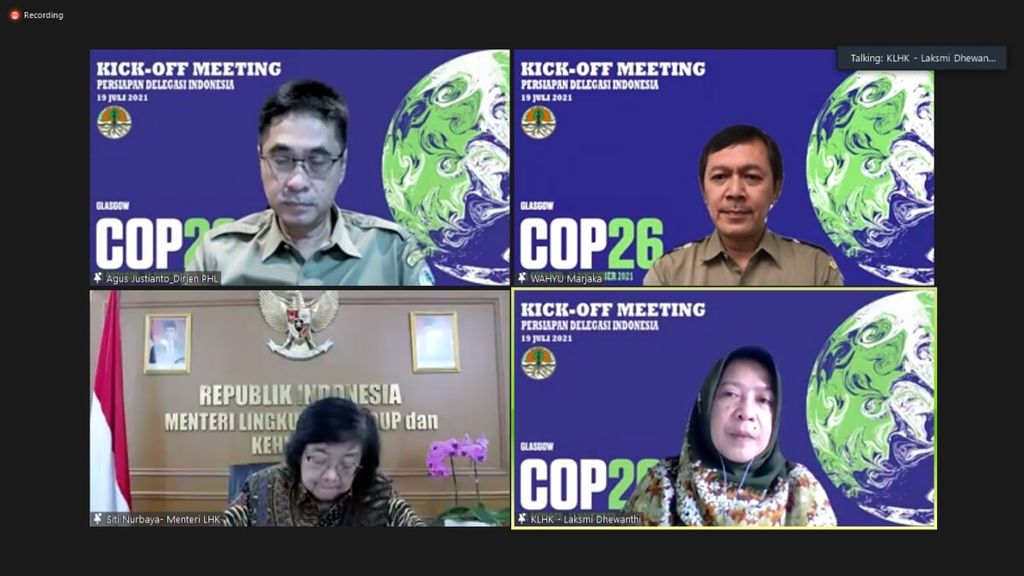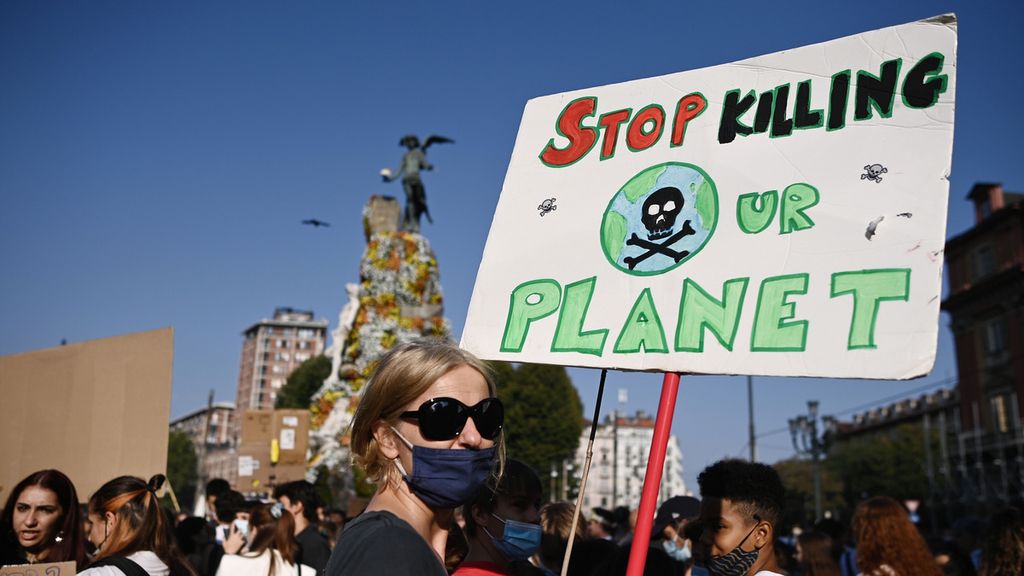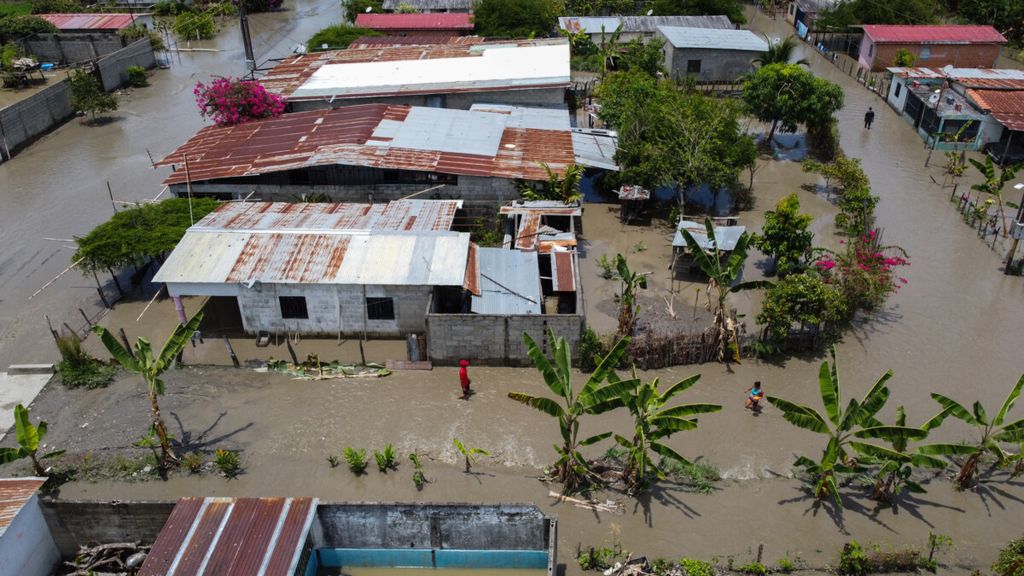Indonesia and COP26
A number of heads of state are scheduled to attend this year’s COP26. However, China, the world\'s largest carbon emitter, has not confirmed the attendance of President Xi Jinping.

Didie SW
Almost every year since 1995, world leaders have met face-to-face to discuss the global response to the climate crisis at a meeting known as the “conference of the parties” (COP).
“Parties” refers to the more than 190 countries that have signed the United Nations Framework Convention on Climate Change (UNFCCC), the UN climate treaty. The UNFCCC COP is the largest convention under the auspices of the United Nations.
A number of heads of state are scheduled to attend this year’s COP26. However, China, the world\'s largest carbon emitter, has not confirmed the attendance of President Xi Jinping. According to the available information, Indonesian President Joko “Jokowi” Widodo will attend the climate conference, accompanied by several relevant ministers.
Also read:
> Extreme Weather, Weather Modification and Disaster
Under the Paris Agreement, which was the result of COP21, the parties agreed to set a global temperature increase of no more than 2.0 degrees Celsius above the global temperature before the 18th-century industrial revolution. However, efforts are being made to limit the increase to a maximum 1.5 degrees Celsius to reduce the impacts of climate change.
At COP26, which is set to take place from 1-12 Nov. 2021 in Glasgow, Scotland, the parties will review their latest NDCs for the first time.
To achieve this, the parties have been asked to make an ambitious contribution through their respective national action plans, called the Nationally Determined Contribution (NDC). At COP26, which is set to take place from 1-12 Nov. 2021 in Glasgow, Scotland, the parties will review their latest NDCs for the first time.
So far, 113 countries have submitted new or updated NDCs. According to the calculations of experts, however, the plan to reduce total emissions is not ambitious enough to limit the temperature rise to 1.5 degrees Celsius and meet the goals of the Paris Agreement.
Important point
What will be the important points? The year 2021 is seen as a decisive year to deal with the global climate emergency, because the window of opportunity to reduce the increase in Earth\'s temperature is declining. More than 30,000 people from around 190 countries are expected to attend offline, although some events are likely to be held online.
The biggest controversy is whether the commitments agreed in Paris five years ago are sufficient to limit the worst impacts of climate change. The thorny issue of climate finance is likely to be critical to the success of COP26.
In 2009, developed countries responsible for the largest emissions pledged to raise US$100 billion per year by 2020 to help developing countries with very low emissions to deal with climate change. However, they have continually missed their target. This risks undermining the confidence and will of developing countries to be ambitious in reducing their emissions.

Agenda pertemuan awal membahas persiapan delegasi Indonesia pada Konferensi Para Pihak Perubahan Iklim atau COP ke-26 yang diselenggarakan secara daring, Senin (19/7/2021).
In addition to the issue of finance, there are also topics from the Paris Agreement that the parties have not resolved or agreed on, namely the rules and mechanisms of the carbon market. Under this mechanism, it is possible for a country to buy carbon credits from other countries and overcome loss and damage from the impacts of climate change.
Indonesia\'s position
Indonesia has been asked to cochair COP26. In addition to the parties’ high expectations for Indonesia to take an active role in the global arena, this is also a sign that climate change will become increasingly important as a domestic issue. However, Indonesia’s economic policies and national development plans have yet to reflect the global expectations. This is seen in the contribution Indonesia has outlined in its new NDC. Climate Action Tracker notes that Indonesia has not really contributed to the efforts to reduce global emissions.
The national emissions reduction target remains the same as last year’s, or 29-41 percent compared to the emissions produced if the country does nothing (business as usual/BAU). In addition, unlike the COP26 target, Indonesia does not seem to have the courage to set 2050 as its carbon neutral target.
The energy sector, especially coal, is still an obstacle to supporting this global target. Although the government plans to gradually halt coal-fired power plants by 2025, coal exports will continue until 2046, and this means it will be difficult to meet a carbon neutral target by 2050. The classic argument juxtaposing economic opportunities with environmental conservation remains a formidable challenge. The value of Indonesia\'s coal exports in 2019 reached US$18.96 billion, and its coal export volume reached 405 million tons in 2020.
Also read:
> Please Pak Jokowi, Give Us a Bridge
> The Face of Solidarity in Banjarmasin Floods
Most of Indonesia’s coal is exported to India and China. China consumes half of the world\'s coal, but it is currently under international pressure to reduce the domestic use of coal as many countries have done, including the United Kingdom and the United States. COP26 is the perfect moment to refresh (rethink) and spur development of the green economy, which is emissions-free, and explore new and renewable energy sources. As an archipelagic country located in the tropics, Indonesia has a great opportunity to use the safe and sustainable energy sources of solar, wind, hydro and nuclear energy while advancing the development of biomass energy and marine power in accordance with local and national conditions.
Towards ‘Clean Indonesia 2060’
On 18 Sept. 2021, President Jokowi became one of the 10 heads of government to participate and speak at the Major Economies Forum on Energy and Climate 2021. The meeting, which was initiated by US President Joe Biden, aims to increase the commitments to reduce global greenhouse gases (GHG) to limit the global temperature rise to a maximum 1.5 degrees Celsius compared to the pre-industrial era, in accordance with the results of the 2015 Paris Agreement.

Demonstrators hold banners during a Fridays For Future protest in Turin, northern Italy, Friday, Sept. 24, 2021. Environmental activists staged rallies around the world Friday demanding leaders take stronger action to curb climate change.
This meeting will have a political impact on the global climate change agenda in Glasgow. According to the CAT Climate Target Tracker, of the approximately 195 countries that have ratified the UNFCCC, less than half have submitted new GHG emissions reduction targets. Even if they have, not all targets are ambitious. The US, the UK, the European Union, Norway and Canada are examples of developed countries that have submitted more ambitious targets. Meanwhile, the examples of developing countries that done the same are Argentina, Costa Rica, Ethiopia, Kenya, Peru and Bhutan. Indonesia is still maintaining its previous emissions target of 29-41 percent, which is lower compared to 2010.
Generally, all countries have set 2050 as their net zero emissions (NZE) target. Several developed countries have pledged to reach NZE before 2050. France, Italy, Germany, the UK and the US have already submitted their plans to the UNFCCC Secretariat. Australia, Russia and Brazil, for various reasons, delivered targets that were either lower or the same as before.
China, the world’s largest emitter followed by the US, has targeted becoming carbon neutral by 2060, even though it has only submitted a higher emissions reduction target. Brazil, which has the largest tropical rainforest in the world and a very large carbon sequestration potential, is also unenthusiastic about increasing its carbon footprint pledge. On the other hand, Sweden has become more ambitious, declaring its determination to achieve NZE by 2045.
According to the Bappenas scenario, Indonesia can achieve NZE as long as the peak is no later than 2027, meaning that CO2 emissions must reach the maximum amount in that year, after which it must decline. Just a one-year delay in reducing emissions could cause a delay of 5-10 years in achieving NZE. If the projected peak is in 2033-2034, Indonesia will achieve NZE in 2060-2070.
Forestry vs. energy
Referring to Indonesia’s NDC, land use change and forestry are the biggest “culprits” compared to other sectors (industry, agriculture and waste). However, less than 10 years from now (2030), energy sector emissions will increase significantly from around 400,000 gigatons (GT) of CO2 equivalent (CO2 eq) to 1.7 million GT of CO2 eq, or an increase of 3-4 times compare to the 2010 emissions figures.
On the other hand, emissions related to land use change and forestry continued to decline from around 650,000 GT of CO2 eq in 2010 to 200,000 GT of CO2 eq. Therefore by 2030, emissions produced by the energy sector are estimated to be more than double the emissions from forestry and land use change. It is natural that attention to the energy sector has continued to increase until now. The government (state actors), business actors and communities (non-state actors) have done much to ensure that the rise in Earth\'s temperature does not exceed 2.0 degrees Celsius, even 1.5 degrees Celsius as set in the Paris Agreement.

Aerial view of flooded farms and houses in La Fortuna, Zulia state, Venezuela, on September 10, 2021. - La Fortuna has been flooded for two weeks after torrential rains hit Venezuela.
Concrete examples of the actions taken include using new and renewable energy, conserving existing and pristine natural forests, carrying out reforestation, replanting and rehabilitation of natural forests, damaged peatlands and mangrove forests; using transportation modes made from natural materials that run on fossil-free fuels such as biofuels and developing electric cars, using solar power (PLTS) and hydro, wind and nuclear power; and designing green buildings that are emission-free; as well as thousands of other green economy initiatives from the business actors and communities.
Partnering between state and non-state actors is the key to successfully addressing climate change. The two support each other in running a green economy. The requisites are mutual transparency and openness in communicating goals, objectives, programs and activities. Initiatives to build partnership platforms, such as the Low Emissions Indonesia Network (JIRE), need to be encouraged so they can play maximum roles. JIRE was initiated by the Mitra Hijau Foundation in 2019, but it has not contributed much because of limited funding and resources.
Doddy S. Sukadri, Executive Director of Mitra Hijau Foundation (YMH)
(This article was translated by Kurniawan Siswoko)